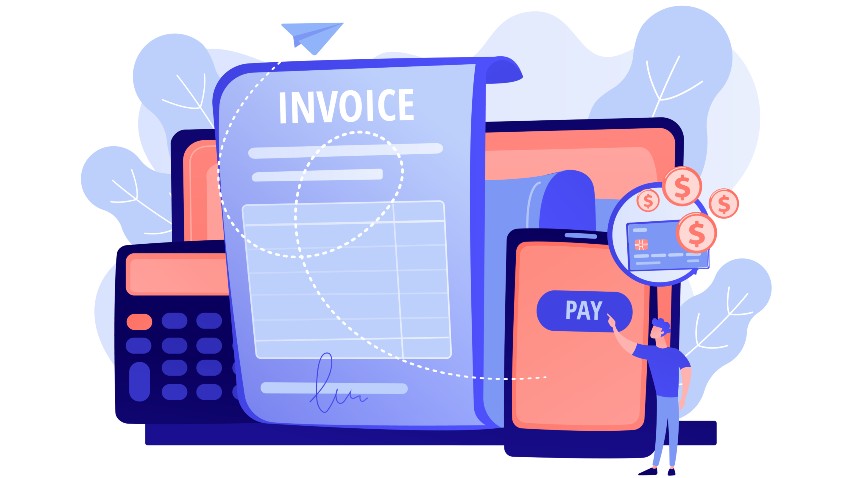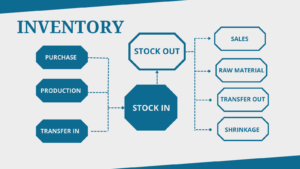In the fast-paced world of business, the backbone of financial operations lies in efficient invoicing and payment processing. Every transaction, from a single product sale to a multi-million-dollar deal, requires a seamless and reliable system to manage both invoicing and payment. Understanding the intricacies of invoicing, including critical details such as the appropriate billing paper size, is vital for companies looking to optimize their financial workflows. Using the correct billing paper size ensures standardized documentation and smoother processing, enhancing client relations and ensuring timely cash flow. In this guide, we will explore everything from the basics to more advanced strategies like invoice processing automation to help businesses improve their financial management.
The Importance of Invoicing and Payment Processing
Invoicing and payment processing play a crucial role in maintaining a smooth relationship between businesses and their clients. The process starts with sending out invoices to customers and ends when the payment is received and reconciled. Without an efficient system in place, businesses may face delays, miscommunications, or missed payments, all of which can severely impact cash flow and client trust.
With the rise of digital solutions, online invoicing and payment processing has become the norm for many businesses. Traditional paper-based invoicing systems are not only time-consuming but also prone to errors and delays. In contrast, online invoice payment processing allows businesses to automate much of the manual work, reducing the likelihood of errors and ensuring payments are processed quickly and securely.
What is Invoicing and Payment Processing?
At its core, invoicing and payment processing refers to the entire sequence of activities that a business undertakes to bill a customer and receive payment for goods or services. This process involves creating and sending an invoice (the document that outlines the transaction details), tracking payments, and recording them in the company’s financial system.
The invoicing process begins when the business delivers the product or service, and an invoice is generated to request payment. It includes essential information such as the goods or services provided, the amount owed, payment terms, and due dates. Once the invoice is issued, invoice payment processing kicks in, ensuring that the payment is completed, confirmed, and logged in the company’s accounting system.
Traditional vs. Online Invoicing and Payment Processing
In the past, businesses relied heavily on traditional, manual invoicing. Paper invoices were mailed to clients, and payments were collected via checks or bank transfers. This method, while functional, has its shortcomings, including the risk of lost invoices, human error in data entry, and the need for extensive follow-ups when payments were delayed. Additionally, it consumed a lot of time and resources that could otherwise be spent on growing the business.
Enter online invoicing and payment processing, a modern approach that eliminates many of the inefficiencies of traditional systems. Using specialized software, businesses can now create, send, and track invoices digitally. Clients can receive their invoices via email and make payments using various digital methods, including credit cards, ACH transfers, and even mobile wallets. Online systems also allow for automated payment reminders and instant confirmations, reducing the need for manual follow-ups. Online invoice payment processing speeds up the entire workflow, enabling businesses to get paid faster and improve cash flow.
The Role of Invoice Payment Processing
Invoice payment processing refers specifically to the steps that occur after an invoice is issued, focusing on how payments are made, received, and reconciled. An effective payment processing system not only facilitates easy transactions but also ensures security and compliance with industry regulations. It encompasses several key elements:
- Payment Methods: Offering multiple payment methods, such as credit/debit cards, bank transfers, and mobile payment apps, ensures that clients have flexibility in how they pay. The more options a business provides, the more likely they are to get paid on time.
- Secure Transactions: One of the major concerns with invoice payment processing is the security of financial data. Payment processors must adhere to strict security standards such as PCI-DSS compliance to protect sensitive information. This is especially important in industries like healthcare and finance, where data breaches can have severe legal and financial consequences.
- Automated Payment Systems: Automated payment processing ensures that once a payment is initiated, it is automatically reconciled with the invoice. This reduces the risk of errors, such as applying a payment to the wrong account or missing payments entirely.
- Payment Confirmations: Once a payment is made, both the business and the customer should receive immediate confirmation. This builds trust and provides a clear record of transactions, which can be critical in case of disputes.
How Invoice Processing Automation is Revolutionizing Business
As businesses grow, manual invoice processing becomes increasingly cumbersome and prone to errors. This is where invoice processing automation comes into play. By leveraging technology, businesses can automate the invoicing process from creation to payment. Invoice processing automation reduces the need for human intervention, making the entire process faster, more efficient, and less prone to mistakes.
With automation, invoices can be generated automatically based on predefined rules, such as recurring billing cycles or specific customer agreements. Payment reminders can be sent out automatically, ensuring that clients are notified of upcoming due dates without any manual input from the business. Additionally, automation helps streamline invoice payment processing by automatically updating the system once a payment is received, reducing the need for manual reconciliation.
Benefits of Online Invoice Payment Processing
Switching to an online invoicing and payment processing system offers numerous advantages, particularly for businesses looking to scale. Some key benefits include:
- Faster Payments: With traditional systems, the time between sending an invoice and receiving payment can be weeks, if not months. Online invoice payment processing significantly reduces this delay, as customers can make payments instantly through digital platforms.
- Reduced Errors: Manual invoicing is prone to errors, from incorrect amounts to misapplied payments. Online systems reduce these errors by automating calculations and ensuring data accuracy.
- Lower Operational Costs: Processing paper invoices and managing payments manually is expensive, requiring dedicated staff and resources. By transitioning to online invoicing and payment processing, businesses can reduce operational costs associated with paper, postage, and administrative work.
- Improved Customer Experience: Clients appreciate convenience, and online invoice payment processing provides just that. With multiple payment options, automatic reminders, and secure payment gateways, customers can settle their invoices quickly and without hassle, improving their overall experience with your business.
- Real-Time Tracking: Online invoicing systems allow businesses to track the status of invoices and payments in real time. This transparency helps managers stay on top of cash flow and make informed financial decisions.
Implementing Invoice Processing Automation
Transitioning to invoice processing automation requires selecting the right tools and integrating them into your existing workflow. Many accounting software platforms, such as QuickBooks, Xero, and FreshBooks, offer automated invoicing features. When choosing a solution, it’s important to consider factors such as ease of use, security features, and scalability.
The implementation process typically involves the following steps:
- Assessment: Evaluate your current invoicing and payment processes to identify inefficiencies and bottlenecks. This will help you understand which aspects can be automated.
- Choosing the Right Software: Select a platform that offers the features your business needs. Look for software that supports online invoicing and payment processing, integrates with your existing accounting tools, and offers automation features like recurring billing and automatic payment reminders.
- Data Migration: If you’re moving from a manual system, you’ll need to transfer customer and transaction data into the new platform. This is a critical step, as incorrect data migration can lead to issues down the road.
- Training and Implementation: Once the software is in place, ensure that your team is trained to use it effectively. This includes understanding how to create and send invoices, track payments, and manage automated features.
The Future of Invoicing and Payment Processing
The future of invoicing and payment processing is undoubtedly digital. As more businesses adopt invoice processing automation, we can expect to see further advancements in artificial intelligence and machine learning that will make these systems even more efficient. For instance, AI-powered invoice processing tools can automatically categorize and code invoices, flag discrepancies, and predict cash flow based on historical data.
In addition, blockchain technology could revolutionize invoice payment processing by creating immutable records of transactions, ensuring greater security and transparency. This would be particularly useful for businesses dealing with high-value transactions or working in industries where regulatory compliance is critical.
Conclusion
Mastering invoicing and payment processing is essential for businesses of all sizes, as it directly impacts cash flow, customer satisfaction, and overall operational efficiency. By embracing online invoicing and payment processing and adopting invoice processing automation, companies can streamline their financial processes, reduce errors, and improve the speed at which they get paid. The future of invoicing lies in automation and digital solutions, and businesses that make this transition early will be well-positioned to thrive in an increasingly competitive marketplace.













